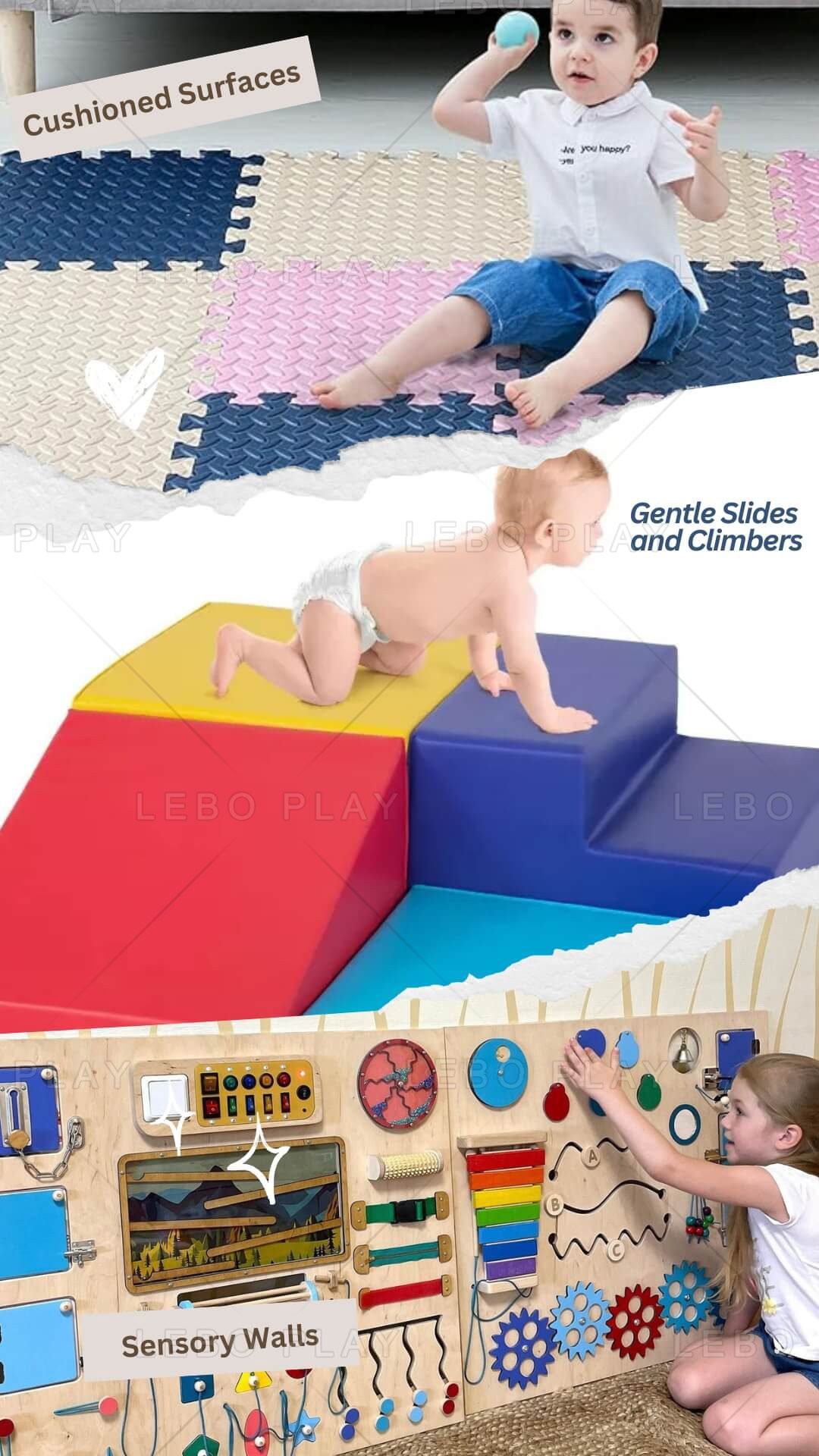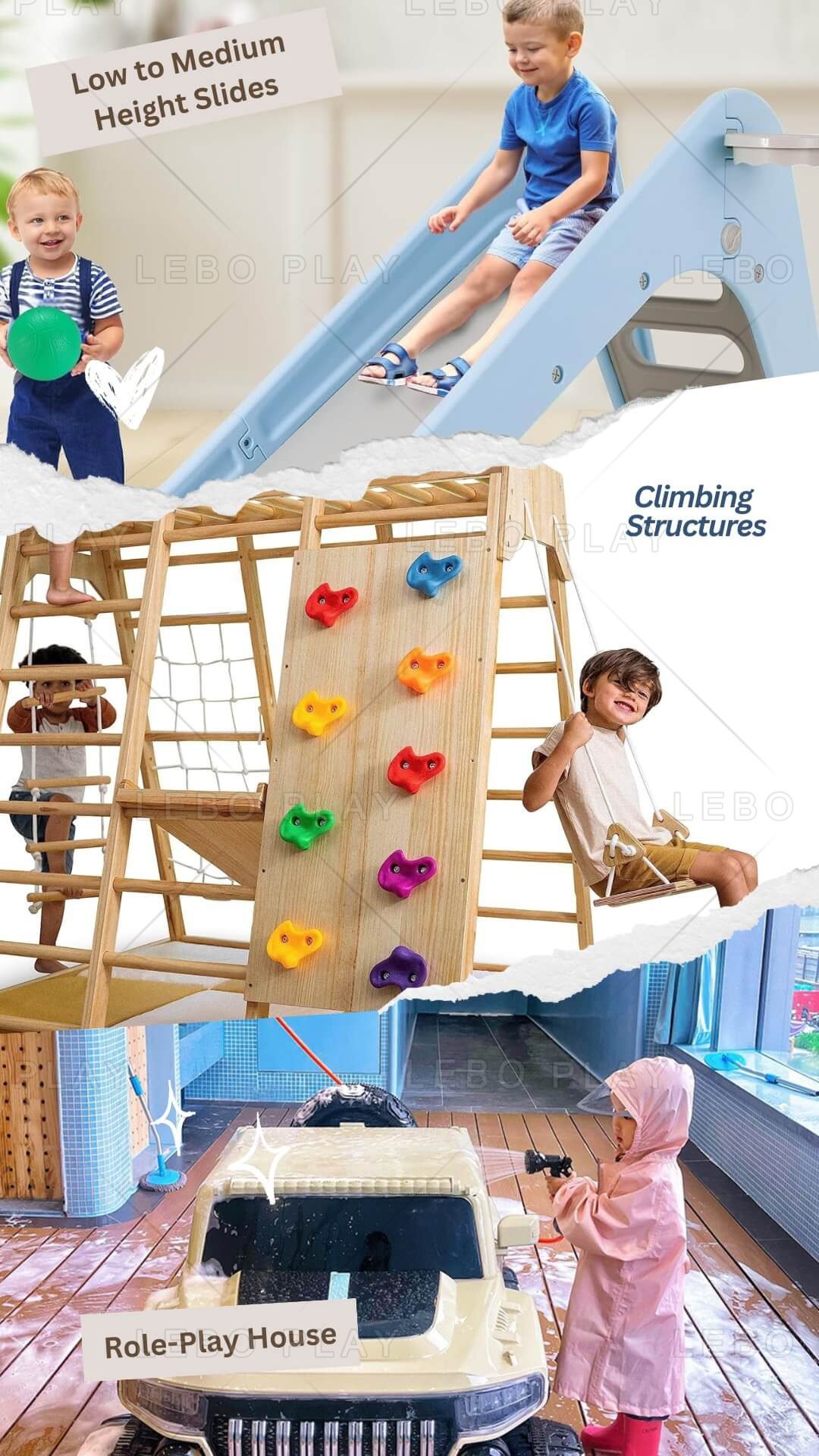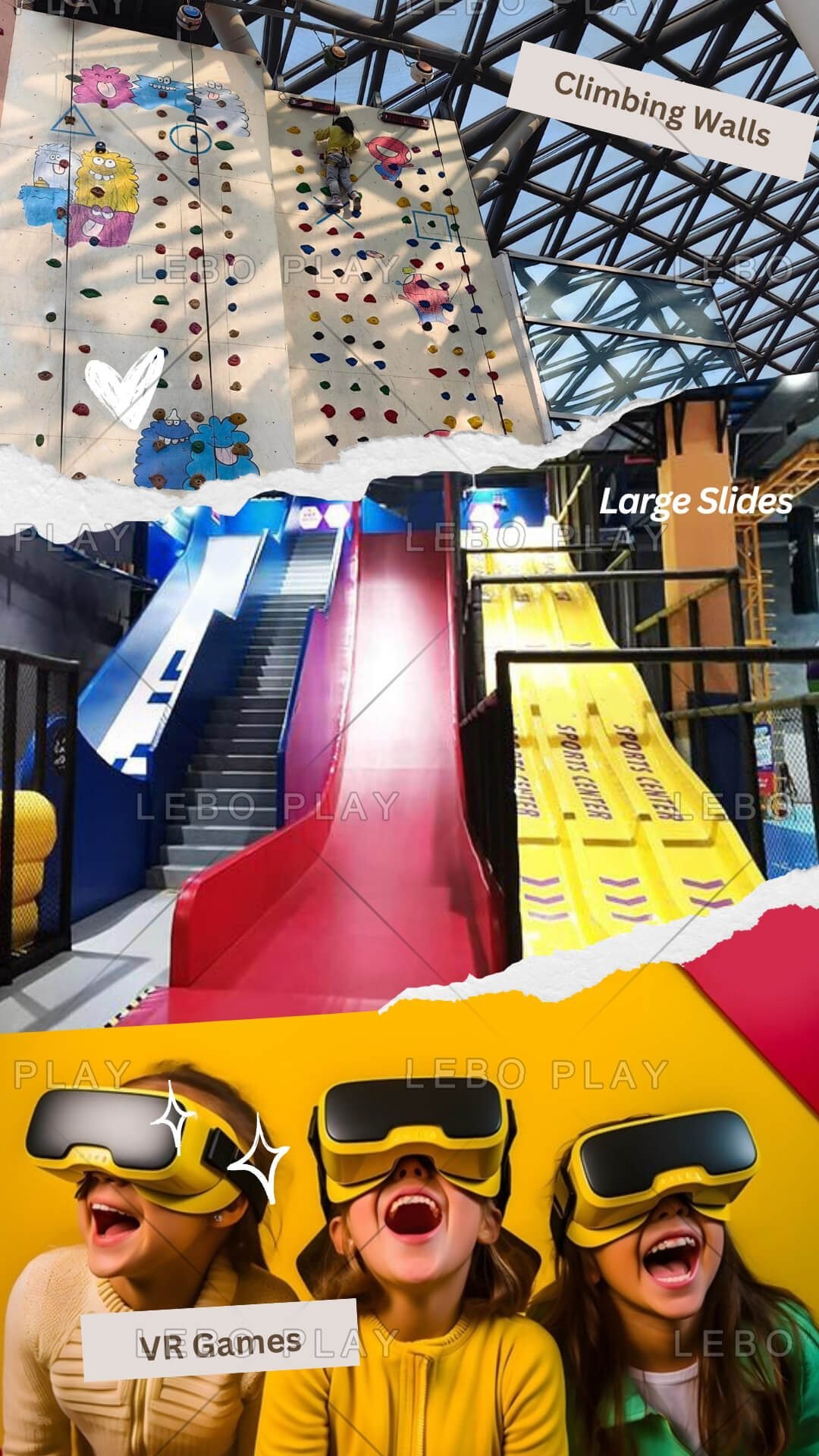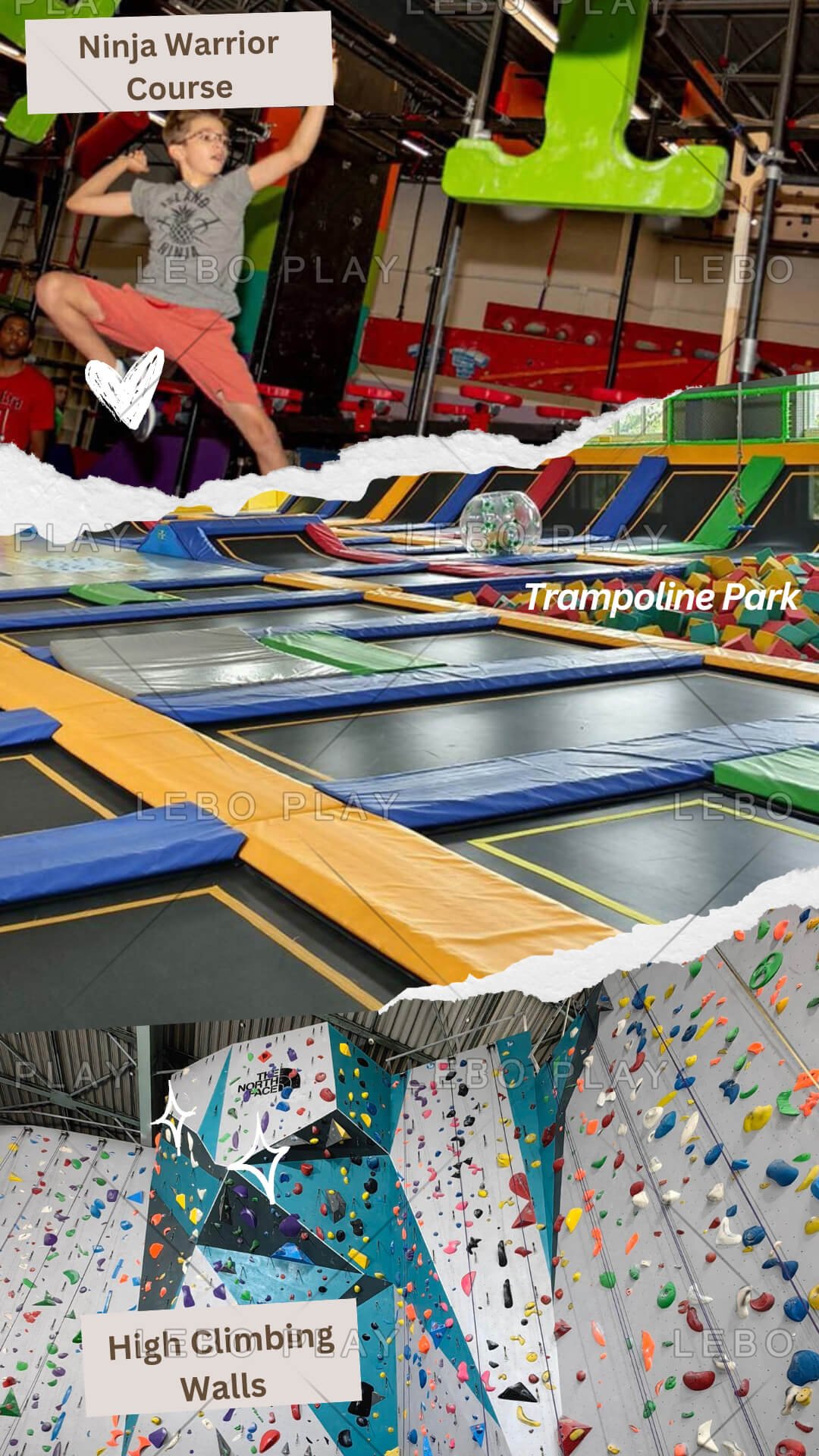When it comes to indoor playgrounds, safety and engagement are everything. Imagine how relieved parents will feel when they walk into an indoor park that isn’t just bright and fun, but also safe and approriate for their child’s age. The right indoor playground isn’t just a space where kids can burn off energy; it’s an environment that supports their physical and cognitive development while ensuring peace of mind for parents. When your indoor park has age-appropriate indoor playground equipment, kids can play, explore, and grow in a safe way, and that enhances the entire experience. For you, the venue operator, it means happier customers who come back again and again, and that’s the key to long-term success.
Choose safe indoor playground equipment by selecting age-appropriate items for key groups: toddlers need soft, sensory play; young kids benefit from low-height slides and interactive panels; older kids enjoy climbing walls and ziplines. Ensure materials are durable, non-toxic, and layout maximizes visibility and safety.
Now that we have the basics in place, let’s take a closer look at what it means to select age-appropriate equipment and create a safe play environment for everyone.
Understanding the Basics of Age-Appropriate Equipment
Importance of Age Segmentation
Each stage of a child’s development requires different types of play and equipment. For example, toddlers are just learning how to move and need play equipment that helps them learn to crawl and climb. On the other hand, school-age kids have better motor skills and need bigger, more challenging equipment. By separating play areas by age, indoor park operators can make sure each group has access to the equipment they need to grow and develop, which means less frustration and greater safety.
Benefits of Segmentation for Safety and Experience
When kids have access to age-appropriate equipment, the likelihood of accidents decreases. Older kids won’t have to worry about bumping into toddlers on the small slide, and younger children won’t be tempted to try challenging equipment that's beyond their capabilities. This age segmentation also leads to a better overall play experience, as kids engage with equipment that fits their skill level, resulting in a more enjoyable and fulfilling playtime.
Key Age Groups to Consider
0–3 Years: Toddlers and Infants
For toddlers and infants, safety and sensory play are of utmost important. These little guys are just beginning to develop hand-eye coordination, balance, and basic motor skills. When you’re picking out equipment for babies and toddlers, you should focus on soft play and low-impact activities.
Examples include:
- Cushioned Surfaces: These surfaces protect toddlers from falls and allow them to crawl, sit, and stand without the risk of serious injury.
- Gentle Slides and Climbers: Low-height slides and soft climbers allow toddlers to explore vertical movement safely.
- Sensory Walls: Panels with different textures, colors, and sounds engage toddlers’ senses and encourage exploration.
Remark: Because toddlers have limited motor skills and require supervision, toddlers play areas should be separated from areas for older kids with clear boundaries to minimize accidental interactions.
4–7 Years: Early Childhood
At this age, children are ready for a little more challenging games that promotes cognitive and motor development. Equipment for this age group should have interactive elements that get them thinking and moving.
Suitable options include:
- Low to Medium Height Slides: Slides in this range can provide excitement while still being safe for younger children.
- Climbing Structures: Moderately challenging climbers help develop coordination and strength.
- Interactive Role-Play Houses and Ball Pits: These add cognitive stimulation and social interaction, encouraging kids to play together and develop social skills.
Remark: Make sure these areas have high visibility so parents and guardians can easily keep an eye on children at play.
8–12 Years: Older Children
Older children seek more adventurous games that test their physical abilities. Indoor playground equipment for this age should be designed to provide more movement and challenge while making sure they don’t get hurt.
Ideal options for this age group include:
- Climbing Walls and Rope Bridges: These structures provide a satisfying challenge and help build agility and upper body strength.
- Zip Lines and Large Slides: These add-ons provide an element of excitement for older kids to get involved in and come back for more.
- Interactive Games: Digital and physical games can further enrich the play experience, encouraging teamwork and social interaction.
- Remark: While these elements bring adventure to the playground, safety features like soft landings and sturdy grips are essential to prevent injuries.
13+ Years: Teenagers
Teenagers often look for more intense, physically engaging activities and spaces to socialize. Creating a space that balances active play and social interaction is key to keeping this age group interested.
Recommended features include:
- Ninja Warrior Courses: Obstacle courses that test strength and endurance are perfect for this age group.
- Trampolines and Parkour Areas: These provide fun challenges for teens and help them channel their energy in a controlled environment.
- High Climbing Walls: As they engage in high climbing walls, they develop essential life skills that extend beyond the climbing wall, making it ideal for teens seeking fun and personal growth.
Remark: Designing for teenagers means considering inclusivity and diversity, as not all teens want to participate in the same level of activity. Providing both challenging and more relaxed options can help them feel welcome.
How to Determine If Existing Equipment Is Age-Appropriate
When you check whether your playground has right age-approriate equipment, you need to look at:
1. Equipment Design:
Is the equipment approriate for the physical capabilities and interests of your target age group? For example, if a slide in the toddler area is too steep, it could cause accidents.
2. Safety Features:
Look for specific safety features that match the age group, like bucket seats for toddler swings. Sarah, a playground owner, recently checked her playground and found that some of the swings intended for toddlers didn’t have these seats. She replaced them to make her playground safer.
3. Wear and Tear:
Over time, even age-appropriate playground equipment can become unsafe due to wear and tear. Playground manager James once noticed cracks in the plastic climbers meant for early childhood users. Although they were initially safe, their deteriorated state made replacement necessary.
4. Interactivity and Complexity:
Equipment shouldn’t require kids to have skills they don’t have yet. For example, a toddler panel with small, little knobs may frustrate toddlers because they don’t have the motor skills to use them.
5. Stability and Support:
For younger children, the equipment must be stable and secure. Ana, a playground owner, checked her playground and found that the little steps for the little kids wobbled when the kids walked on them. She fixed them so they wouldn’t move and be safer.
6. Space and Congestion:
You need to have enough room so the kids don’t run into each other. If you put big-kid equipment in a tiny space, they’re going to knock into each other and get hurt.
7. Height and Depth Suitability:
Make sure the platforms and play pits are the right size for the kids who are going to use them. For example, a ball pit with deep edges might be too hard for little kids to climb in and out of by themselves.
Creating an Inclusive Environment
In addition to separating the play areas by age, a great indoor playground also has equipment that any kid can use. Accessible equipment can make a huge difference for children with physical or sensory disabilities, allowing everyone to enjoy the space together.
1. Consideration for Children with Different Abilities:
Adding inclusive play options, such as wheelchair ramps, sensory panels, and low-height activities makes your playground suitable for children with various physical and sensory needs. Providing a range of activities that can be enjoyed independently or with support ensuring all children feel welcome and included.
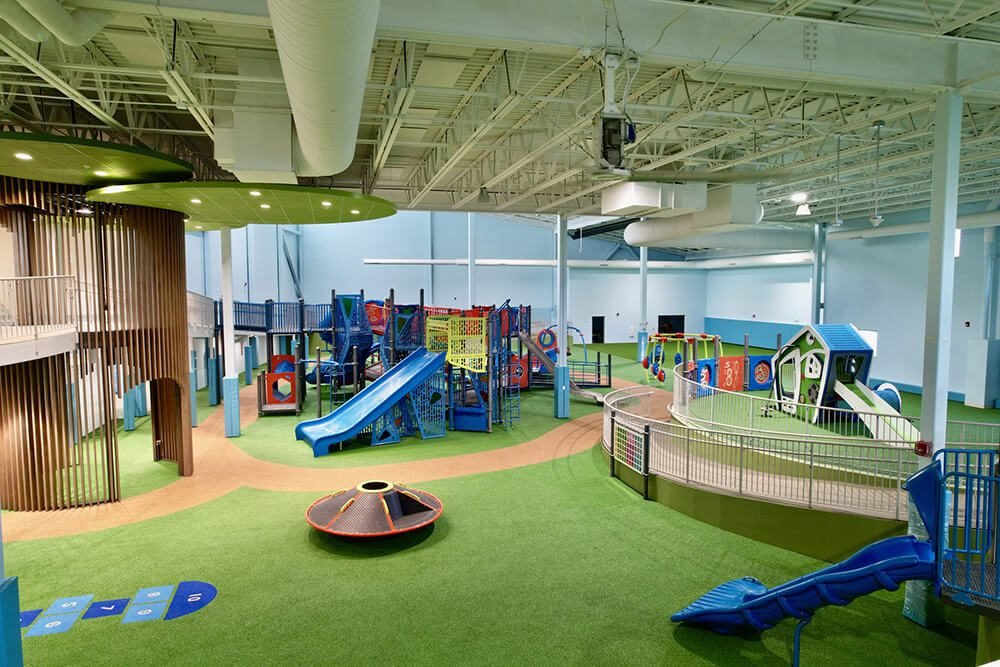
2. Multi-Generational Play Opportunities
Another way to make your playground even better is to design it so that families can play together. Equipment that lets older and younger siblings play together, or places where mom and dad can join in, fosters family bonding and enhances the playground’s appeal as a family-friendly destination.
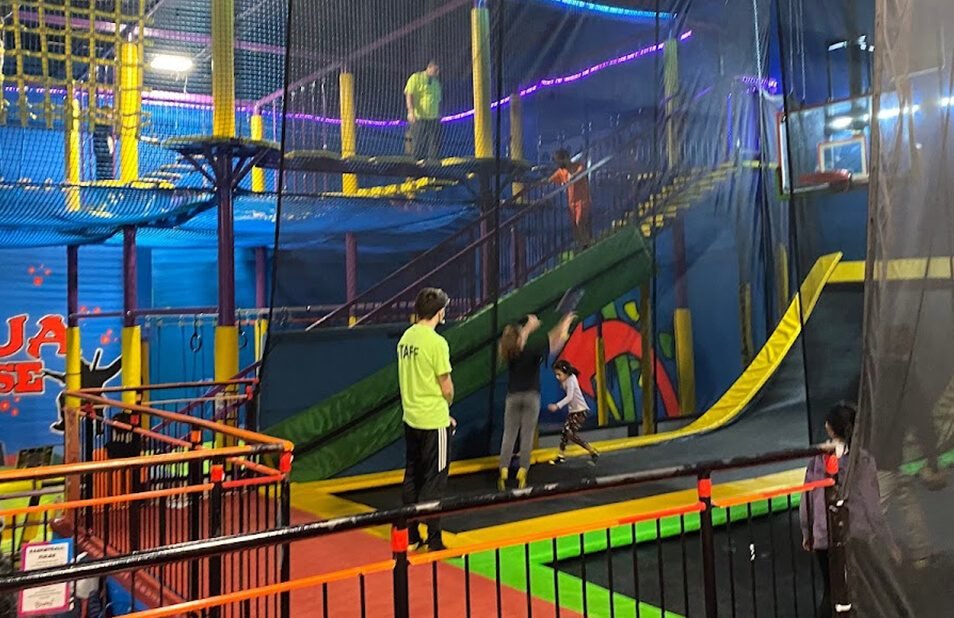
Conclusion
Choosing safe, age-appropriate indoor playground equipment is a crucial investment in customer loyalty and children’s well-being. By dividing play spaces according to age, regularly accessing equipment, and creating an inclusive environment, venue operators can ensure their playgrounds are both safe and engaging for children of all ages. Taking the time to research and prioritize safety-certified, age-appropriate equipment is key to building a successful indoor playground business that families will want to return to time and again.
If you’re ready to create a space that prioritizes safety, engagement, and inclusivity, reach out to us at Lebo Play. Our team is here to help you design a playground that will leave a lasting positive impression on families and children alike.

